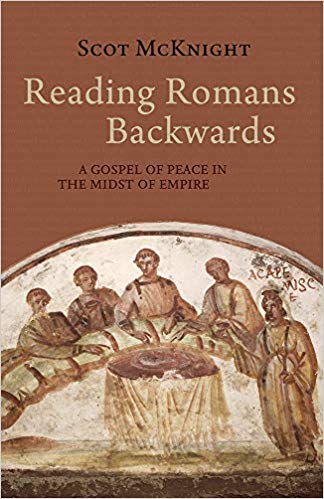(Baylor Press, 2019, 236 pages).
BEN: Let’s talk for a bit about the general notion that reading Romans backwards provides fresh insights into Romans. On the one hand, I think you are right that Rom. 12-16 is often neglected and its importance for understanding Romans is underestimated. But since no one in antiquity, holding a document in scriptum continuum would read it backwards, and more to the point, the logic of the arguments in Romans requires that one read the document forwards, not backwards, as a progressive series of arguments leading to a climax and conclusions, I wonder how one avoids reading back into earlier chapters of Romans things that don’t appear to be there? For example, you argue that Rom. 13 is especially addressed to the weak mostly Jewish Christians who are tempted to resist paying their taxes, though there is no weak and strong language at that point or prior to that point in the argument. And why wouldn’t the argument in Rom. 13 apply to the whole audience? Isn’t the document mostly addressed to the Gentile Christian majority in Rome, who need more correction than the returning Jews? Comment please.
SCOT: Thanks Ben. Yes, it is true that the letter would have been from 1:1 to 16:27, and it is true that I am asking folks to read Rom 13:1-7 by reading back from later chapters. But let us remember one simple social fact: the audience of this long letter lived in chapters 12-16, esp chps 13-15. Paul did not need to tell them up front what he knew about them before he marched into 1:1 because everything in those later chps were the lived experience of the original audience. We read it from front to back but they experienced the front chapters in light of their own experiences, and some of that was the tension between the Weak and the Strong. Perhaps even more than “some,” I would want to argue.
On the audience: I have for a long time listened to the majority-minority issue about the Roman house churches. I’m not sure we know as much as we think we sometimes do but this is perhaps most important. It may well be true the majority were gentiles but that does not mean the majority of the letter was addressed to them. Part of what I am doing is seeking to show that reading the whole in light of Rom 14-15 can perhaps sharpen the intended audience of the letter, and it might challenge the consensus that it was mostly gentiles in that audience. Sometimes we have to address a part of a congregation in order to communicate the most important message for the whole congregation.













